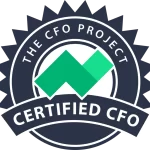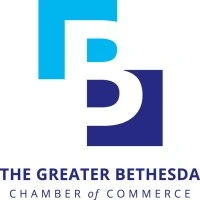
Percentages reveal far more insights than raw numbers alone. One successful entrepreneur, who recently sold a service business, emphasized how focusing on percentages transformed his future and played a significant role in his achievements:
“Previously, I would go through the numbers provided by my accountant,” explained the owner of a $2.5 million dollar business, “and it would drive me insane. While I knew we were making progress, I couldn’t gauge how effectively we were managing costs in relation to our increasing sales.” “Thankfully, my accountant was astute. He proposed adding percentages to all the costs and income in the Profit & Loss statement, allowing me to grasp our performance at a glance.”
“It was like a sudden burst of illumination!”
“Instantly, I could assess how well one set of figures compared to the previous one without even delving into the numbers.” “Cost of Goods Sold,” often abbreviated as COGS%, signifies the expenses incurred to deliver the product or service to customers, excluding day-to-day operational costs or overheads.
(These costs are also known as ‘Direct’ or ‘Variable Costs.’)
This figure holds immense significance, as it greatly impacts both Gross Profit and Net Profit, with a particularly substantial effect on the latter.
While many business owners tend to focus primarily on revenue, it’s crucial to recognize that even a small reduction in COGS% (Cost of Goods Sold) can have a comparable impact on Gross Profit as a substantial increase in revenue. Understanding the components of your COGS% and exploring negotiation or investigation with suppliers for better prices can make a significant difference. If your business revolves around services, it’s important to pay attention to work practices and job management, as they can yield the same effect on Gross Profit. This presents an opportunity to investigate discrepancies and streamline processes. One key aspect to consider is the correlation between the number of labor hours you sell and the number of hours you pay for.
Having an excess of “un-billable” hours could potentially result in substantial financial losses when multiplied by your charge-out rate.
While most basic accounting systems offer a basic job costing system, if your business undertakes projects and outsources labor, we recommend acquiring dedicated job-costing software that integrates with your accounting system. The importance of cost reduction in business may seem obvious, but many fail to appreciate the significant impact it can have on the bottom line.
Every dollar saved on your COGS directly contributes to your bottom line, serving as a compelling incentive to prioritize cost optimization.
In business, costs can generally be categorized into two types: Direct Costs or COGS (Cost of Goods Sold), and Indirect Costs or Overheads. COGS is sometimes referred to as Cost of Sales. The key distinction between COGS and Overheads lies in their relationship to sales. COGS are directly associated with the sale itself, while Overheads are incurred regardless of whether a sale is made. For instance, rent is considered an overhead expense as it must be paid irrespective of sales, whereas the purchase of stock or payment to service providers directly corresponds to sales transactions.
It is crucial to differentiate between COGS and Overheads since every business must be aware of its gross profit. Gross Profit is calculated by subtracting COGS from the income figure. This figure serves as a vital indicator of business performance for both managers and lenders. Additionally, Gross Profit provides an important benchmark for comparing your business to others within the same industry.
Now, let’s explore the types of costs that fall under the classification of COGS:
- Purchase of stock for resale
- Changes in stock levels, such as the difference between the stock held at the beginning and end of an accounting period
- Freight costs associated with the transportation of goods into and out of stock
- Labor costs directly related to the production of a service or product
- Importing costs, including duties and other related expenses
- Discounts provided
- Stock adjustments and wastage
- Purchase returns and allowances
- Raw materials
- Manufacturing costs
- Packaging expenses
- Other costs incurred to prepare goods or services for sale
COGS, or Cost of Goods Sold, holds a critical position among the “Key Financial Numbers” when it comes to profit and cash flow outcomes. In certain situations, a small percentage reduction in COGS can lead to a larger increase in profit compared to achieving a substantial boost in sales.
This phenomenon occurs because when sales grow, other figures tend to grow as well, including COGS and Overheads. Additionally, increased sales create a demand for more working capital to finance suppliers, additional inventory, and work in progress. However, a reduction in COGS does not have the same effect.
A decrease in COGS directly impacts your bottom line, contributing to improved profitability. Even if you operate a service-based business and don’t sell physical products, COGS still relates to you. In the case of service businesses, Work in Progress (WIP) serves as a factor in COGS. Unfortunately, many service businesses lack a proper methodology for managing WIP or jobs. Consider the example of a contractor we once encountered.
“When we asked them how often they invoice their customers”, their response was: “When I run out of money!”
It is crucial to ensure prompt invoicing for jobs in order to expedite payment. Various systems are available that facilitate the acceleration of WIP and jobs, leading to significant improvements in profit and cash flow.
By budgeting for COGS, you can effectively monitor profitability. COGS has a tendency to gradually increase without your awareness. These rising costs must be regularly passed on to customers, or else they will erode profit margins.
While keeping track of such costs may initially seem burdensome, the resulting control over margins and profitability far outweighs the cost of maintaining such control.
Here are eight strategies to effectively reduce your COGS:
- Minimize wastage: Implement efficient wastage management and write-off practices to reduce the amount of materials used on jobs. Evaluate your ordering methods and consider introducing job cost sheets to track goods used on specific projects.
- Increase productivity: Optimize the efficiency of contractors and staff by identifying and minimizing non-chargeable time. Incentivize your employees by sharing the cost-saving benefits. Explore the possibility of outsourcing certain tasks, including overseas options, using platforms like https://www.upwork.com to find skilled and cost-effective technicians, artists, designers, and business service providers. This can free up more expensive personnel to focus on chargeable work.
- Review and negotiate with suppliers: Avoid falling into a routine by constantly evaluating and negotiating with suppliers. Leverage technology advancements to explore new opportunities for improving efficiency and cost-effectiveness.
- Foster innovation: Seek innovative ways to enhance your operational processes. Research your industry to discover emerging ideas and best practices. Encourage a culture of continuous improvement by implementing a policy of making small weekly enhancements.
- Benchmark industry standards: Compare your performance against industry benchmarks to gain insights into areas for improvement. Online resources may provide benchmarks specific to your industry or business.
- Manage exchange rates: Mitigate foreign currency risks by securing favorable exchange rates through forward cover options. This allows you to lock in rates that benefit your cost of goods.
- Monitor and adjust margins: Regularly assess the percentage of your cost of goods to stay informed about the right time for renegotiation or seeking alternative suppliers. This proactive approach ensures that your margins remain favorable.
- Implement Purchase Orders: Establish a system of using purchase orders to control spending within your business. By requiring a purchase order, you can ensure that only authorized personnel spend money, reducing the risk of unnecessary or uninformed expenses. This simple piece of paper can potentially save you thousands of dollars, especially when there are changes or potential obsolescence that others may not be aware of.
Note: In our Case Study business example, a 2% reduction added $12,000 to the bottom line
*Cost of Goods Sold Percentage %
This metric indicates the proportion of Cost of Goods in relation to Revenue, expressed as a percentage. Example:
Revenue $1,000,000
COGS $ 750,000
750,000 / 1,000,00 x 100 = 75%
Stay tuned for our upcoming blog post, where we will delve into comprehensive details regarding the 7 Leading Drivers and provide valuable insights on enhancing their performance.
If you’re eager to begin enhancing your 7 Leading Drivers immediately and don’t wish to wait for the next blog post… Access our eBook ‘DISCOVER 7 LEADING DRIVERS THAT IMPACT PROFIT AND CASHFLOW!


Basil Zaff has devoted his entire life to assisting business leaders and their teams in embracing the importance of numbers. When beginning discussions, he often emphasizes that revenue is vanity, profit is sanity and cash is king. Basil Zaff perceives running a business akin to managing a sports team, where everyone must be aware of the score. Every business aspires to elevate their cash flow, profitability, and overall value. The Strength of One, crafted by Basil Zaff and the secureCFO team, is the code of your company. How many incremental changes of just 1% or 1-day do you need to make to achieve your desired financial outcomes? Throughout Basil Zaff’s endeavors, a constant theme emerges; simplifying complexity. This empowers individuals without financial expertise to readily analyze and enhance their business’s cash flow, profitability, and overall value. Basil Zaff has devoted his life to this purpose. This has helped thousands of businesses to scale 2xProfit, 3xCash and 10xBusiness Value.



